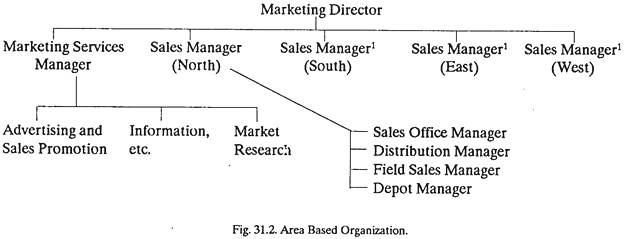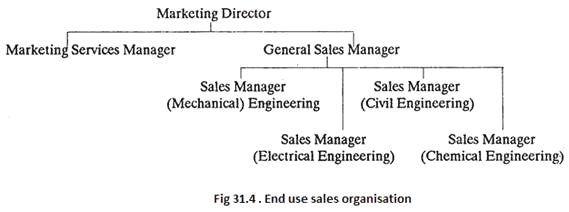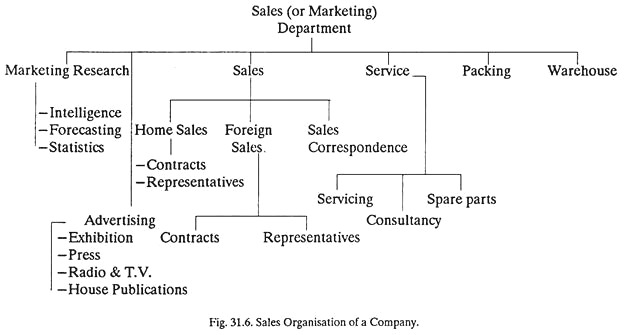After reading this article you will learn about the organisation of sales department:- 1. Functional Organization 2. Area based Organization 3. Product Group Organization 4. End Use and Customer Class Sales Organization.
Functional Organization:
The functional organization (Fig. 31.1) is usual for the small or medium sized company with a limited range of related products. Functional organization has various functional (marketing) departments or specialists reporting to a sales or a marketing director. Functional organization has the advantage of administrative simplicity.
Functional organization suffers from certain disadvantages such as:
(a) Inadequate detailed planning for specific products and markets, since no body is assigned full responsibility for any product or market.
(b) Products that are not favourites with various functional specialists tend to get neglected.
Area based Organization:
The area based organization (Fig. 31.2) is one of the more common ones in use for concerns with a relatively limited range of products requiring selling and distribution to be on a more or less nationwide scale through many outlets.
Product Group Organization:
This type of sales organization (Fig. 31.3) is employed when there is a wide range of relatively unrelated product groups which require different selling methods and the company sales forces require their own particular market and technical knowledge.
End Use and Customer Class Sales Organization:
If an enterprise is selling a substantial range of products to dissimilar types of customers or for different uses, the selling operations are split up by type of customer or end use. Separate sales forces are necessary. However, marketing services may either be kept centralised or again split up as per the particular division of the selling operations. Fig. 31.4 shows the end use sales organization and Fig. 31.5 the customer class sales organization.
Fig. 31.6 shows a general organization of the sales department of an engineering company.





